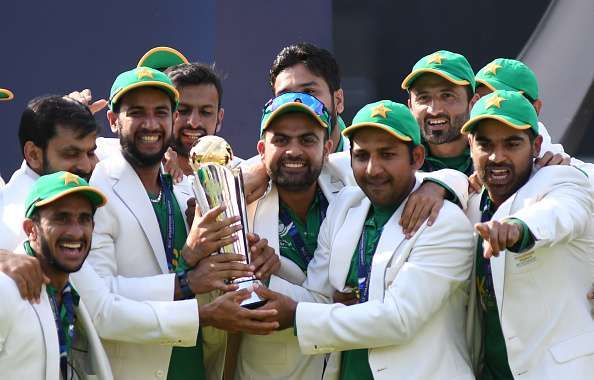
The A to Z of ICC Champions Trophy 2017
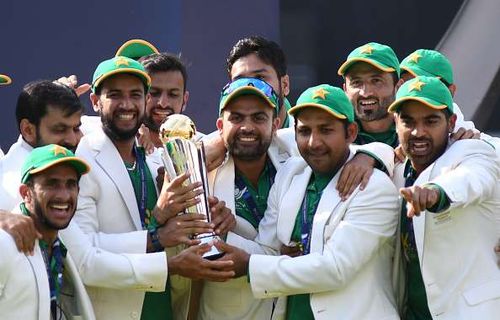
A is for Arch-rivals, who were placed in the same groups in the tournament, be it Group A's Australia and England or Group B's India and Pakistan. England and Pakistan got the better of their respective rivals ultimately – while the former advanced to the semi-finals, the latter went on to lift the trophy.
B is for Bowling, "Batsmen win you games, bowlers win you tournaments." That quote came from Pakistan's bowling coach Azhar Mahmood, a couple of days before the final. How right was he? Not all pitches were ideal for the bowlers, but Pakistan realised they could take on any team with a coherent bowling unit, and they made it work. They proved that cricket was not just a batsman's game.
C is for Chases, which was touted to be the success mantra in the tournament. You win the toss, chase, and progress. Pakistan turned this around and proved that making use of best resources in the available conditions is the one and only mantra for victory.
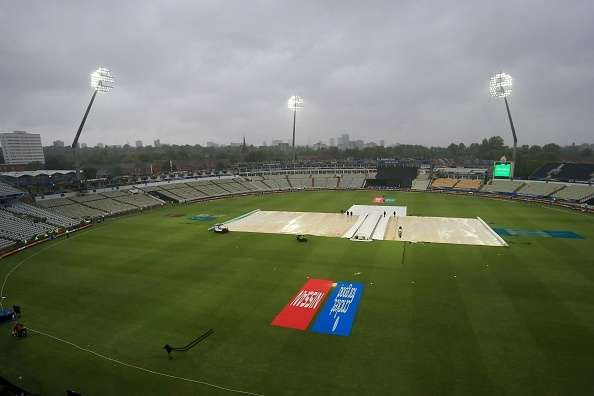
D is for DLS, the Duckworth-Lewis-Stern method, whose prominence moved up one notch after the Champions Trophy. The fate of three matches was decided by this method, that led social media to dub this tournament as the "DL Trophy"!
E is for Edgbaston, which saw just one complete match in this tournament. It hosted a total of five matches in which two had their winners decided by the DLS method, one had no result because of the washout, and the successful last one in which India beat Bangladesh in the semi-final.
F is for Fresh pitches, which unfortunately England did not get in their semi-final. Pakistan had just upset the hosts, and England skipper Eoin Morgan was left to crib about how the worn out pitch had immensely helped the opponent. About four days later, Pakistan proved that regardless of the nature of the pitch, a team can win as long as they have an efficient side which can perform in all conditions.

G is for Gesture, the one that Virat Kohli made after getting rid of Mushfiqur Rahim during the semi-final. Kohli, who was as animated as ever, pulled his tongue out and made a comical gesture, which sent social media into a frenzy. A new meme was born, thanks to the Indian skipper.
H is for Hasan Ali, who was an absolute delight in the tournament. He scalped 13 wickets in the tournament including three key ones in the final. Finishing at an average of 14.64 and an economy rate of 4.29, he walked away with the Golden Ball in style.
I is for India versus Pakistan, who met twice during the tournament. Though they got a win each, we know which win was bigger. Pakistan handed India their biggest loss in an ICC final, by a margin of 180 runs. Who would have thought the day would go against the favourites even after they chose to do what they were good at – chasing!
J is for Joe Root, for making the highest individual score of the event. His 133 off 129 balls, also his career-best in ODIs, came against Bangladesh at the Oval in the very first match of the tournament. Walking into the tourney with an impressive form, he was left disappointed after the eventual winners sent his team packing from the tournament in the semi-final.
K is for Kohli, the man who hardly disappoints with the bat, though the last few months were probably not his best. He also faced the pressure of leading the defending champions in the tournament. Crossing 8000 ODI runs, rising to number one in ODI rankings and scoring three half centuries probably wouldn't make up for his single digit in the final against Pakistan. But the resilient skipper held his head high and gracefully handled the defeat.
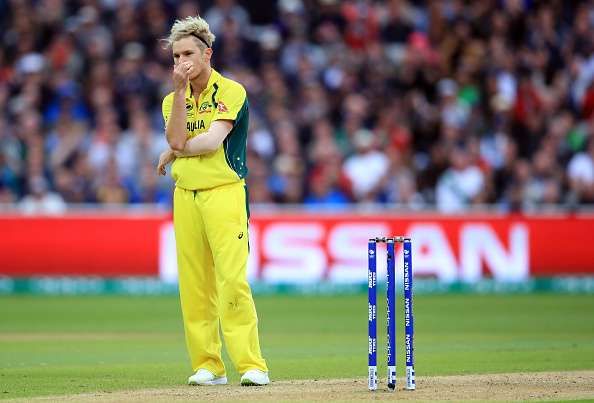
L is for Luck, which the Australians lacked. Rain interruption in the first two matches gave them tied points and left them in a do-or-die situation against England. The rain gods showed no mercy even then. DLS method favoured England, and Australia crashed out of the tournament without playing a single complete game.
M is for Middle overs, which were crucial in the tournament. A number of teams lost the plot during the middle overs, and their batsmen tumbled one after the other. Pakistan was reduced from 114-2 to 164 all out in their group match against India, South Africa sank from 140-2 to 191 against India, and England lost eight wickets for 83 runs against Pakistan in the semi-final.
N is for Number One, the top-ranked ODI team that is South Africa, the winners of the inaugural Champions Trophy tournament. The number one team that hoped to break its 19-year jinx. Unfortunately, they couldn't turn their luck around, as they lost two out of their three group matches and retained their "chokers" tag.
O is for the Overcast conditions bestowed upon the tournament by mother nature. It havocked but also rescued teams. Around five matches in the group stages were affected by the torrential rains in the region, which had fans doubting the condition during the 2019 World Cup which is to be hosted by England as well.
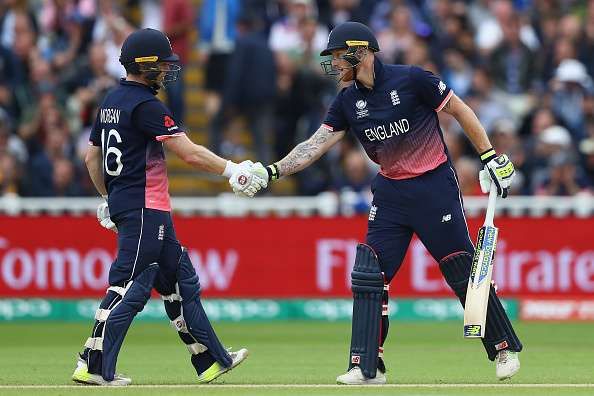
P is for Partnerships, the match-winning formula in the tournament. Rohit Sharma and Shikhar Dhawan for India, Azhar Ali and Fakhar Zaman for Pakistan, Danushka Gunathilaka and Kusal Mendis for Sri Lanka, Joe Root and Eoin Morgan for England..the list goes on.
Q is for Questions left unanswered. Questions that sparked controversies. Why was Moises Henriques picked ahead of Chris Lynn in a do-or-die game for the Australians? Why was Kedar Jadhav given only three overs to bowl in the final when he provided a breakthrough for India against Bangladesh in the semi-final?
R is for the Resurgence of the Champions Trophy itself. After being defunct for three years, the tournament was revived, and now it has certainly proven its significance. It is here to stay, that is for sure. What a comeback!
S is for Smart Technology. Bat speed and the nature of the pitch are always widely discussed but technological advancements have made all that a thing of the past. This tournament saw the introduction of sensors in bats which quantify the speed and angle of the bat. The ICC also put to use pitch-analysing drones which gave a clear idea about the working of the surface.

T is for Tons, aplenty in the tournament. Ten centuries, all special ones but a few exceptional ones: Hashim Amla became the first South African cricketer and the fastest to heap 25 ODI tons, Bangladesh's Shakib Al Hasan and Mahmudullah scripted a successful chase against New Zealand with their hundreds and Pakistan's Fakhar Zaman seized the moment with his century in the final against India.
U is for Upsets and the Unpredictability, the underlying theme of the tournament, the beauty in all its glory. It was clear midway that this tournament did not have a single strong title contender. The underdogs, as they were called, believed that rankings were just numbers and went on to beat the top teams with nothing but confidence. The unpredictability spiced up the tournament.
V is for Venerable, the venerable Mickey Arthur. From being sacked as the Australian coach after the 2013 Champions Trophy to lifting the cup with the Pakistan cricket team at the same venue, Arthur's life has come a full circle. With bowling coach Azhar Mahmood by his side, he has been the backbone of the team, putting Pakistan back on the radar.
W is for World Cup, which we are looking forward to. This tournament just hyped the 2019 World Cup where more teams will be playing at the same venue, meaning more competitive sporting action. Stories of upsets, successes and rising stars have escalated the excitement.
Take the quiz here: How well do you remember the ICC Champions Trophy 2017
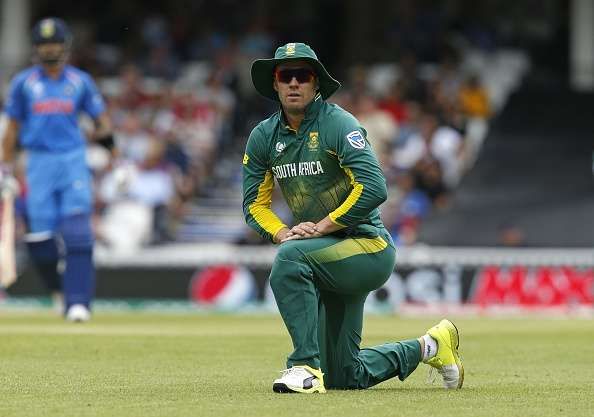
X is for "X", the variable which has been kept open for South Africa. When will they stop choking? When will the jinx be broken? Will AB de Villiers ever lay his hands on an ICC trophy? Let's keep that open.
Y is for Youngsters, the stars of the tournament, especially for the teams that entered as the underdogs. The one that caught the eye was Pakistan's 18-year-old Shadab Khan, who became the youngest player to be a part of a Champions Trophy winning team. The list also has Fakhar Zaman and Hasan Ali, the mainstays of the final. The slouchy Sri Lankan team had the likes of Niroshan Dickwella, Asela Gunaratne and Kusal Mendis, who have given the team some hope during this tough transitional phase.
Z is for Zaman, the hero of the final. The sensational centurion who beat all odds to help his team lift the trophy. Keeping emotions at bay, Zaman played with determination and confidence apart from his heart and soul. Without his contribution, India would have easily walked away with the trophy. The hero of the final!
Also Read: ICC Champions Trophy 2017 final: 5 memorable moments from the India vs Pakistan match that don’t fade away